Renault Captur vs Toyota Corolla – Erot ja hinnat vertailussa
Vertaa suorituskykyä, tavaratilaa, kulutusta ja hintaa yhdellä silmäyksellä.
Ota selvää, kumpi auto on sinulle parempi valinta – Renault Captur vai Toyota Corolla?
The Battle of Versatility: Renault Captur vs. Toyota Corolla
In the vast world of automobiles, selecting the right vehicle can be a challenging endeavor. Today, we delve into a detailed comparison between two distinguished competitors — the Renault Captur, a compact SUV, and the Toyota Corolla, a classic hatchback. Both models offer innovation, style, and efficiency, but which one truly stands out? Let’s explore their technical offerings and innovations.
Design and Dimensions
The Renault Captur articulates the modern appeal of SUVs with dimensions measuring 4,239 mm in length, 1,797 mm in width, and 1,575 mm in height. With a trunk capacity expanding up to 422 liters, it offers sufficient room for both passengers and cargo. In contrast, the Toyota Corolla, with its hatchback design, presents a sleeker look. It measures 4,370 mm in length and 1,790 mm in width, allowing it to maintain a low-profile presence with a height of just 1,435 mm. Cargo space, while not as plentiful as Captur’s, provides an adaptable trunk capacity of 361 to 313 liters depending on the model.
Engine and Performance
The Renault Captur boasts a variety of engine configurations including Full Hybrid, Petrol MHEV, LPG, and Petrol. The power output ranges from 91 HP to 158 HP, supported by torque from 160 Nm to a robust 270 Nm. It offers a choice of automatic, manual, and dual-clutch automatic transmissions all paired with a front-wheel-drive system. Depending on the configuration, the Captur achieves 0-100 km/h in 8.5 to 14.3 seconds, with a maximum speed reaching up to 180 km/h.
Meanwhile, the Toyota Corolla is equipped primarily with Full Hybrid engines, delivering 140 HP to 196 HP with a torque output managed via a CVT automatic transmission. This setup privileges efficiency, contributing to a nimble acceleration of 0-100 km/h in 7.5 to 9.2 seconds, while maintaining a uniform top speed of 180 km/h. The Corolla's powertrain is designed to balance performance with eco-conscious engineering, achieving a low consumption rate of 4.4 to 4.6 L/100km.
Fuel Efficiency and Environmental Impact
Both vehicles are engineered with a commitment to reducing environmental impact. The Renault Captur offers a fuel efficiency ranging between 4.7 L/100km to 7.8 L/100km and emits CO2 within 106 to 139 g/km, classified within CO2 Efficiency Classes C and D. The Toyota Corolla, on the other hand, provides a stellar fuel efficiency of 4.4 to 4.6 L/100km and maintains CO2 emissions around 100 g/km, securely positioned within CO2 Efficiency Class C.
Comfort and Capacity
Both the Renault Captur and Toyota Corolla are engineered to seat five passengers comfortably. The Captur capitalizes on interior space to offer generous legroom and storage, aligning with its SUV body type, while the Corolla’s design optimizes for urban agility without sacrificing interior comfort.
Innovative Additions
Renault’s Captur is equipped with advanced driver-assistance systems and customizable features to cater to a dynamic lifestyle, providing both tech-savvy and practical solutions. In comparison, the Corolla offers the latest in Toyota’s hybrid technology. This promises not only a smooth and responsive driving experience but contributes to an overall quieter ride.
Conclusion: The Choice is Yours
In assessing the Renault Captur and Toyota Corolla, both models are commendable in their right, offering distinct advantages. The Captur appeals to those who prefer the commanding presence and versatility of an SUV, enhanced by varied engine choices. Conversely, the Corolla speaks to those who value the fuel economy and hybrid innovation in a sleek hatchback design. Ultimately, the choice rests upon drivers’ individual lifestyles and preferences.
Tässä mennään yksityiskohtiin: tekniset erot tarkemmin
Kustannukset ja kulutus: Taloudellisuudessa on mielenkiintoisia eroja näiden kahden mallin välillä.
Renault Captur on hinnassa vakuuttava edullisempi – sen lähtöhinta on 23500 €, kun taas Toyota Corolla maksaa 33300 €. Ero on noin 9850 €.
Polttoaineenkulutuksessa näkyy ero: Toyota Corolla kuluttaa 4.40 L ja on siten tuskin havaittava taloudellisempi kuin Renault Captur, jonka kulutus on 4.50 L. Ero on noin 0.10 L /100 km.
Moottori ja suorituskyky: Teho, vääntömomentti ja kiihtyvyys kertovat paljon auton ajotuntumasta. Tässä näkyy, kumpi tarjoaa enemmän ajamisen iloa.
Moottoritehossa Toyota Corolla on jonkin verran etulyöntiasemassa – 178 hv verrattuna 158 hv:een. Ero on noin 20 hv hv.
Kiihdytyksessä 0–100 km/h Toyota Corolla on vähän nopeampi – 7.50 s vs. 8.50 s. Ero on noin 1 s sekuntia.
Huippunopeus on sama – molemmat yltävät 180 km/h:een.
Tila ja käytännöllisyys: Perheauto vai arjen kumppani – kumpi tarjoaa enemmän tilaa, mukavuutta ja käytettävyyttä?
Molemmissa autoissa on tilaa 5 henkilölle.
Omapainossa Renault Captur on melkein huomaamaton kevyempi – 1293 kg verrattuna 1420 kg:een. Painoero on noin 127 kg.
Tavaratilan koossa Renault Captur tarjoaa vähän enemmän – 422 L verrattuna 361 L:een. Ero on noin 61 L.
Maksimikantavuudessa Renault Captur pärjää selvästi havaittava paremmin – jopa 1363 L, noin 311 L enemmän kuin Toyota Corolla.
Kantavuudessa Renault Captur on vähäinen parempi – 457 kg verrattuna 450 kg:een. Ero on noin 7 kg.
Yhteenvetomme: Renault Captur osoittautuu olevan suoriutuu paremmin tärkeissä osa-alueissa ja saa siksi tittelin DriveDuel Champion!
Tässä vertailussa Renault Captur on monipuolisempi kokonaisuus.
Renault Captur
Renault Captur on tyylikäs ja monipuolinen kaupunkiauto, joka yhdistää käytännöllisyyden ja modernin muotoilun. Sen kohokohtia ovat mukautuva sisustus ja tilavat tavaratilat, jotka tekevät siitä erinomaisen valinnan aktiivisille perheille. Lisäksi Capturin ajomukavuus ja tehokkaat moottorivaihtoehdot tekevät siitä miellyttävän kumppanin niin arjessa kuin viikonlopun seikkailuissa.
Tiedot @ renault-presse.de
@ renault-presse.de
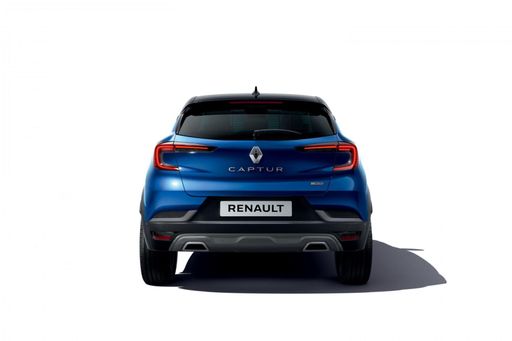 @ renault-presse.de
@ renault-presse.de
 @ renault-presse.de
@ renault-presse.de
 @ renault-presse.de
@ renault-presse.de
Toyota Corolla
Toyota Corolla on ollut pitkään yksi suosituimmista henkilöautoista maailmanlaajuisesti, ja se tunnetaan erityisesti luotettavuudestaan ja taloudellisuudestaan. Uusimmassa mallissa on panostettu entistä enemmän koukuttavaan muotoiluun ja moderniin teknologiaan, jotka tekevät ajokokemuksesta miellyttävämmän. Lisäksi Corolla tarjoaa runsaasti tilaa ja mukavuutta, mikä tekee siitä erinomaisen valinnan perheille ja kaupunkiautoilijoille.
Tiedot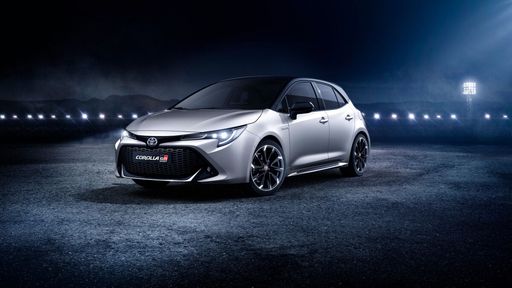 @ Toyota
@ Toyota
 @ Toyota
@ Toyota
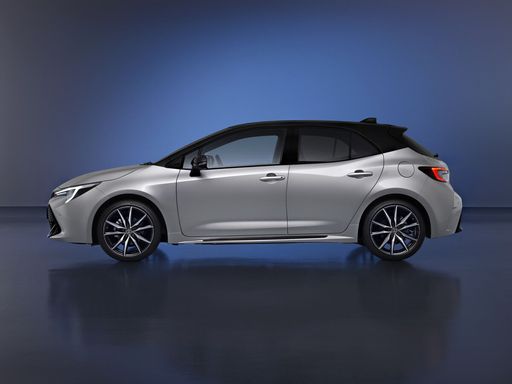 @ Toyota
@ Toyota
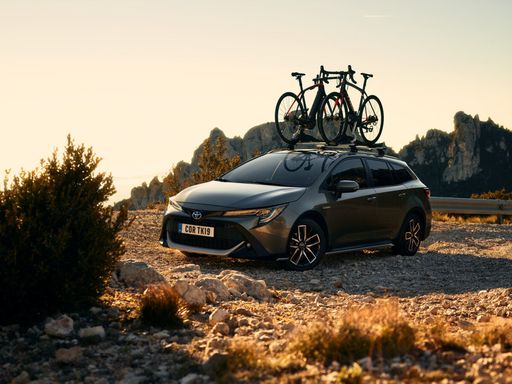 @ Toyota
@ Toyota
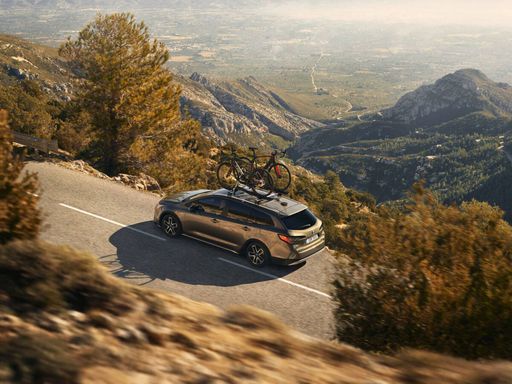 @ Toyota
@ Toyota

|

|
|
|
|
Kustannukset ja kulutus |
|
|---|---|
|
Hinta
23500 - 33100 €
|
Hinta
33300 - 40700 €
|
|
Kulutus L/100km
4.5 - 6 L
|
Kulutus L/100km
4.40 L
|
|
Kulutus kWh/100km
-
|
Kulutus kWh/100km
-
|
|
Sähköinen toimintasäde
-
|
Sähköinen toimintasäde
-
|
|
Akun kapasiteetti
-
|
Akun kapasiteetti
-
|
|
CO2
102 - 135 g/km
|
CO2
100 g/km
|
|
Polttoainesäiliön tilavuus
48 L
|
Polttoainesäiliön tilavuus
43 L
|
Mitat ja kori |
|
|---|---|
|
Kori
SUV
|
Kori
Hatchback
|
|
Istuimet
5
|
Istuimet
5
|
|
Ovet
5
|
Ovet
5
|
|
Omamassa
1293 - 1514 kg
|
Omamassa
1420 - 1460 kg
|
|
Tavaratila
326 - 422 L
|
Tavaratila
313 - 361 L
|
|
Pituus
4239 mm
|
Pituus
4370 mm
|
|
Leveys
1797 mm
|
Leveys
1790 mm
|
|
Korkeus
1575 mm
|
Korkeus
1435 mm
|
|
Maksimi tavaratila
1276 - 1363 L
|
Maksimi tavaratila
1004 - 1052 L
|
|
Kantavuus
376 - 457 kg
|
Kantavuus
400 - 450 kg
|
Moottori ja suorituskyky |
|
|---|---|
|
Moottorityyppi
Bensiini MHEV, Bensiini, Täyshybridi
|
Moottorityyppi
Täyshybridi
|
|
Vaihteisto
Manuel, Automaatti
|
Vaihteisto
Automaatti
|
|
Vaihteiston tyyppi
Manuaalivaihteisto, Kaksoiskytkin automaatti, Automaattivaihteisto
|
Vaihteiston tyyppi
CVT-vaihteisto
|
|
Vetotapa
Etuveto
|
Vetotapa
Etuveto
|
|
Teho hv
91 - 158 hv
|
Teho hv
140 - 178 hv
|
|
Kiihtyvyys 0-100 km/h
8.5 - 14.3 s
|
Kiihtyvyys 0-100 km/h
7.5 - 9.2 s
|
|
Huippunopeus
168 - 180 km/h
|
Huippunopeus
180 km/h
|
|
Vääntömomentti
160 - 270 Nm
|
Vääntömomentti
-
|
|
Sylinterien lukumäärä
3 - 4
|
Sylinterien lukumäärä
4
|
|
Teho kW
67 - 116 kW
|
Teho kW
103 - 131 kW
|
|
Iskutilavuus
999 - 1789 cm3
|
Iskutilavuus
1798 - 1987 cm3
|
Yleiset |
|
|---|---|
|
Mallivuosi
2024 - 2025
|
Mallivuosi
2025
|
|
CO2-tehokkuusluokka
D, C
|
CO2-tehokkuusluokka
C
|
|
Merkki
Renault
|
Merkki
Toyota
|
Millaisia voimalinjoja Renault Captur:ssa on saatavilla?
Mallia tarjotaan Etuveto-versiona.
Näytetyt hinnat ja tiedot ovat arvioita, jotka perustuvat Saksan listahintoihin, ja voivat vaihdella maittain. Nämä tiedot eivät ole oikeudellisesti sitovia.
